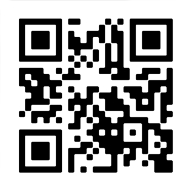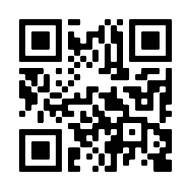Appalachian U.S. Dialects: A Living Legacy in the Hills
Tucked away in the valleys and ridges of the Appalachian Mountains, a distinct and historic form of American English continues to thrive. Appalachian dialects, shaped by centuries of isolation and cultural heritage, preserve many linguistic features from early British, Scots-Irish, and colonial English.
In this post—part of our ongoing U.S. Regional Dialects series—we’ll explore how Appalachian English has endured, evolved, and resisted standardization, offering ESL students a unique window into American language and identity.
Where Is Appalachian English Spoken?
The Appalachian dialect isn’t limited to one state—it stretches across a wide swath of the eastern United States, following the Appalachian Mountains. While the dialect has common roots, its expression can vary slightly by region, shaped by local culture, geography, and history.
Here’s a closer look at some of the key areas where Appalachian English is alive and well.
West Virginia
Often considered the heart of Appalachia, West Virginia has one of the most recognizable Appalachian dialects. The state’s rugged terrain and history of coal mining, logging, and tight-knit mountain communities helped preserve traditional speech patterns.
Common Expressions
- “I’m fixin’ to” – About to do something
- “You’uns” or “Y’uns” – You all (regional form of “y’all”)
- “Jawin’” – Chatting or arguing
- “Holler” – A small, remote valley
- Example: “He lives down in the holler by the crick.”
Linguistic Features
- Use of double modals: “I might could go.”
- Monophthongization: Words like tire and fire may become tar and far.
- Final /g/ often dropped in verbs: huntin’, fishin’, workin’
- Use of “be” instead of “are”: “Them dogs be barkin’ all night.”
Did you know?
Many West Virginians trace their ancestry to Scots-Irish settlers. As a result, you’ll still hear Elizabethan-era grammar and words that disappeared in most of the U.S.
Here you can hear an example of the speech of a man from West Virginia, courtesy of the International Dialects of English Archive (IDEA).

Eastern Kentucky
Known for its strong dialect and rich storytelling traditions, Eastern Kentucky plays a major role in the preservation of Appalachian speech. The region’s oral history and bluegrass music culture continue to pass down unique vocabulary.
Common Expressions
- “Reckon” – Think or suppose
- “Haint” – Ghost
- “Tuckered out” – Very tired
- “Aimin’ to” – Planning to
- Example: “I’m aimin’ to get the chores done before supper.”
Linguistic Features
- A-prefixing common: “He’s a-gatherin’ firewood.”
- Final cluster reduction: cold becomes coal, told becomes tol’
- Use of “hit” as a subject pronoun: “Hit was raining all day.”
- Double modals: “You might could go if it stops rainin’.”
Did you know?
This region has been home to many influential Appalachian writers and poets, like James Still, a Kentucky-based writer whose work reflects the coal mining communities of Eastern Kentucky. River of Earth uses Appalachian vocabulary and grammar to portray life in the mountains with lyrical realism.

East Tennessee
The dialect here blends Appalachian elements with a slightly Southern rhythm, especially around Knoxville and the Smoky Mountains. This area is rich in folk traditions, and you’ll often hear speech influenced by country music, storytelling, and regional pride.
Common Expressions
- “Bless your heart” – Can be sincere or sarcastic
- “A spell” – A little while
- “Right smart” – A lot or quite a bit
- Example: “It rained a right smart yesterday.”
Linguistic Features
- Unmarked third person singular: “She go to town on Fridays.”
- R-lessness in some rural areas: bear may sound like bayuh
- Use of “done” for emphasis: “I done told you already.”
- Non-rhoticity in some areas (though less common today): “Farmer” may sound like “fah-muh.”
Did you know?
East Tennessee is the birthplace of Dolly Parton, whose accent and phrasing are iconic examples of Appalachian English in pop culture.
Western Virginia
Not to be confused with West Virginia, the state, this region is in the western portion of the state of Virginia, and bridges Appalachian and Southern linguistic traditions. You’ll hear a mixture of mountain speech and rural Southern drawl, especially in the Blue Ridge Mountains.
Common Expressions
- “Rurnt” – Ruined or spoiled
- “Peckerwood” – A slang term that can refer to a country person (sometimes derogatory)
- “Cain’t” – Variant of “can’t”
- “I swan” – Expression of surprise or disbelief
- Example: “Well I swan, I didn’t think you’d show up!”
Linguistic Features
- Retention of older English forms: thee, thy occasionally in poetic or folk settings
- Use of “was” for all subjects: “We was at the store.”
- Diphthong simplification: time might sound closer to tahm
- Pronounced nasalization of vowels before “n” or “m”
- Use of “done” as an auxiliary verb: “He done fixed it already.”
Did you know?
Western Virginia’s speech patterns were often used in 19th-century American literature to portray rural mountain characters.

Western North Carolina
In the Blue Ridge and Smoky Mountains of western North Carolina, Appalachian English still thrives in local conversation, storytelling, and music. The region is known for craft traditions, folk festivals, and a strong sense of local heritage.
Common Expressions
- “Right as rain” – Doing well
- “Feelin’ poorly” – Not feeling well
- “Cut a shine” – Show off or cause a scene
- Example: “He sure cut a shine at the party last night.”
Linguistic Features
- Non-rhoticity in some communities: dropping /r/ sounds at the end of words
- Lexical isoglosses: Different words used in different valleys (e.g., “poke” for bag)
- Use of “might could” – Double modals for politeness or uncertainty
- Vowel breaking: One vowel becomes two (e.g., bed may sound like bee-yid)
- Final consonant reduction: Cold → coal, old → ole
Did you know?
The Mountain Dance and Folk Festival in Asheville is one of the longest-running celebrations of Appalachian culture, showcasing traditional music and dialect-rich storytelling.
Northern Georgia
The southernmost portion of Appalachia, North Georgia blends Appalachian speech with Southern expressions. This area features dialects that sound a little different from northern Appalachian regions, but still carry the same linguistic roots.
Common Expressions
- “Carry” – To take or transport
- Example: “I’ll carry you to the store.”
- “Dern” – Mild expletive (similar to “darn”)
- “Mash” – To press
- Example: “Mash the button to start it.”
Linguistic Features
- Mix of Southern drawl and Appalachian speech, especially in vowel lengthening
- Glide deletion in /aɪ/: Right sounds like rat, light like lat
- Merging of “pen” and “pin” sounds: Both may sound like pin
- Y’all is more dominant here than “you’uns” or “youse”
- Habitual “be” in rural speech: “He be fishin’ every Saturday.”
Did you know?
North Georgia is where Appalachian culture meets Southern hospitality. Local festivals and historic sites preserve not only the dialect, but also traditional cooking, music, and crafts.
Defining Features of Appalachian Dialects
The Appalachian dialect evolved from the English spoken by early settlers, particularly those from the British Isles. The region’s relative isolation helped preserve many linguistic features from Elizabethan and Scots-Irish English that have disappeared elsewhere in the U.S.
Pronunciation
- Elongated vowels: Fire may sound like fahr, and tire like tar.
- Dropped final consonants: Hollow becomes holler; cold might be pronounced coal.
- Cluster reduction: Final consonant clusters may be reduced: child becomes chile, kind may sound like kin.
- Unique stress patterns: Certain syllables may be stressed differently than in General American English.
Grammar
- Double modals
- Used for nuance or politeness:
- “I might could help you with that.”
- (Meaning: I might be able to help.)
- A-prefixing
- An “a-” is added before a verb in progressive form:
- “He’s a-fishin’ down by the creek.”
- This reflects a structure once found in older British English.
- Unmarked possessives
- The possessive “’s” is sometimes dropped:
- “We’re goin’ to Granny house after church.”
- Use of “done” for emphasis
- “He done told you twice!”
- (Meaning: He already told you twice.)
Vocabulary
Many words used in Appalachian English are rare elsewhere or come from older English sources:
- Sigogglin’ – Crooked or leaning
- “That table’s all sigogglin’.”
- Tote – To carry
- “I’ll tote that bucket for ya.”
- Dope – Refers to soda or soft drink
- “Grab me a dope from the fridge.”
- Holler – A narrow valley between mountains
- “They live down in the holler.”
- Rurnt – Ruined or spoiled
- “This pie’s rurnt—it fell in the oven.”
Common Appalachian Phrases & Idioms
- “Over yonder” – Over there, a short distance away
- “The barn’s over yonder past the creek.”
- “Blessed if I know” – I truly don’t know
- “Where’d he go?” / “Blessed if I know!”
- “Plumb tuckered out” – Completely exhausted
- “After workin’ all day, I’m plumb tuckered out.”
- “It’s comin’ up a cloud” – A storm is approaching
- “Better head inside—it’s comin’ up a cloud.”
- “Reckon” – Think or suppose
- “I reckon we’ll make it by sundown.”
- “Aimin’ to” – Planning to do something
- “I’m aimin’ to start supper soon.”
Cultural Influences on Appalachian English
British & Scots-Irish Roots
Appalachian English preserves language patterns brought by settlers from the British Isles in the 1700s. Because of the region’s isolation, many of these old forms survived:
- Double modals and a-prefixing are remnants of older British usage.
- Certain pronunciations and idioms sound Shakespearean or Elizabethan to modern ears.
- Storytelling, oral history, and folk music helped keep the dialect alive for generations.
Isolation & Identity
Geographic isolation meant fewer outside influences, allowing Appalachian communities to develop a strong sense of linguistic identity:
- Speech patterns vary by “holler” or county, creating micro-dialects.
- Appalachian English often carries cultural pride, even in the face of stereotypes.
Appalachian in Literature, Music & Media
Appalachian English appears in storytelling, music, and media that celebrate the region:
- Writers like Lee Smith, James Still, and Ron Rash incorporate Appalachian voice into their work. Lee Smith is a Virginia-born novelist who masterfully weaves Appalachian dialect into her characters’ voices. Fair and Tender Ladies is written in the form of letters from an Appalachian woman, offering authentic linguistic and cultural insights.
- Musicians like Dolly Parton and Ralph Stanley use dialect in lyrics and interviews.
TV & Streaming Media
- Justified – Kentucky-based crime drama featuring Appalachian characters and phrases
- The Waltons – Classic show set in rural Virginia, using authentic Appalachian speech
- Dopesick – Highlights life in Appalachia during the opioid crisis
Music & Oral Traditions
- Appalachian folk and bluegrass songs are rich in dialect and storytelling.
- Songs like “Man of Constant Sorrow” and “Shady Grove” are full of Appalachian imagery and language.
- Oral traditions keep regional vocabulary alive through ballads and family stories.
Why It Matters for ESL Students
Understanding Appalachian dialect helps ESL learners:
- Recognize non-standard but valid English forms
- Build listening comprehension for rural accents
- Learn how language connects to culture and geography
- Appreciate the rich diversity within American English
Appalachian English may sound unusual at first, but it’s a window into American heritage and resilience. Recognizing its features empowers students to adapt more easily to different speech patterns across the U.S.
Ready to Learn English at Excel English Institute?
At Excel English Institute, we help students develop both language proficiency and cultural fluency. From urban slang to mountain speech, we believe every dialect is a doorway to connection. Though often misunderstood, Appalachian English is a linguistic treasure, preserving history and culture in every phrase.
Learning about regional dialects helps ESL students better understand native speakers and cultural contexts. At Excel English Institute, we offer immersive courses that help students adapt to different accents and improve pronunciation. Join us today and master English with confidence!
Excel English Institute’s U.S. Dialects Guide for ESL Learners
Below is a list of the dialects we will be exploring in this series. Links will be added as they are published, so check back for updates!
- Discovering U.S. Dialects: A Guide for ESL Learners
- Midwestern Dialect: The Heart of Neutral American English
- Southern Dialects: The Warm & Melodic Voices of The South
- Northeastern Dialects: The Voice of America’s Historical Heart
- Western Dialects: The Language of The Open Frontier
- Southwestern Dialects: A Blend of Cultures & Languages
- Appalachian Dialect: Preserving The Language of The Mountains
- Hawaiian Pidgin: The Unique Voice of The Aloha State
- African American Vernacular English (AAVE): A Rich & Influential Dialect












